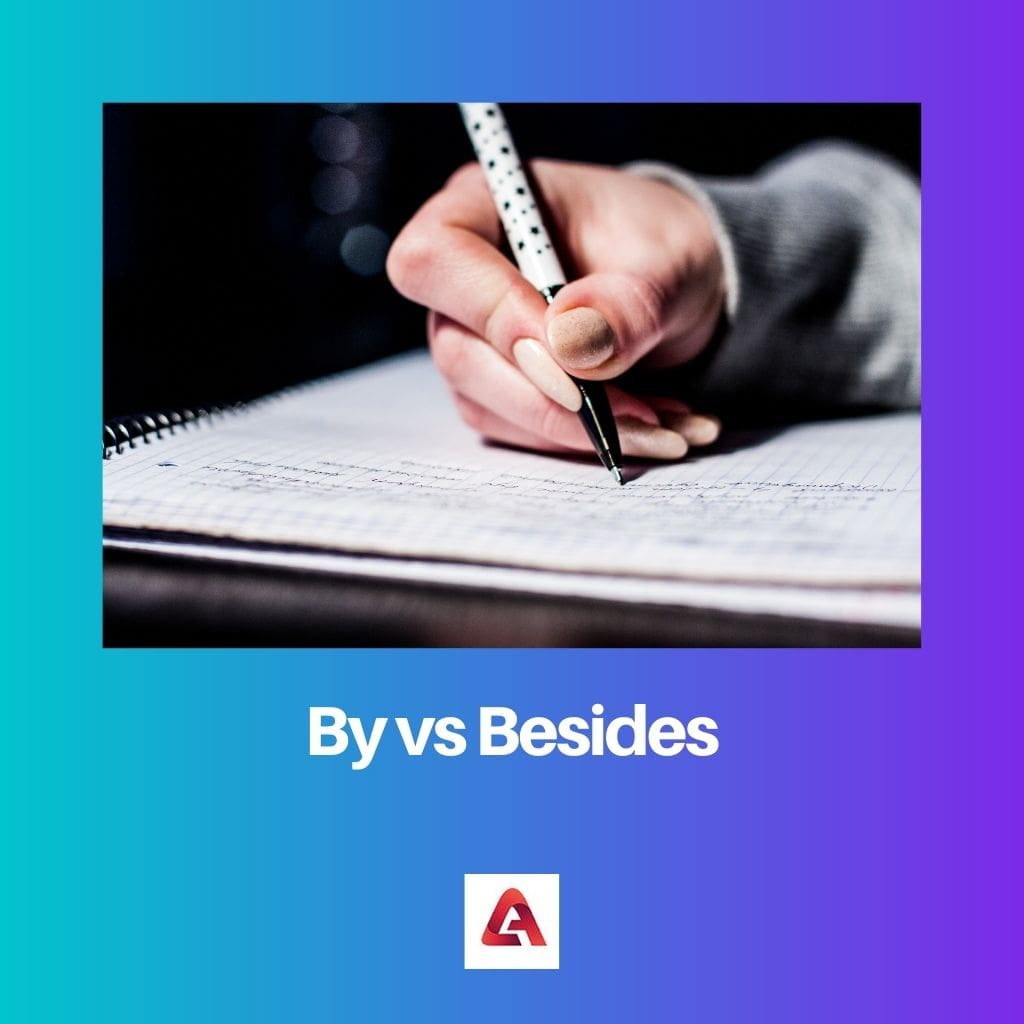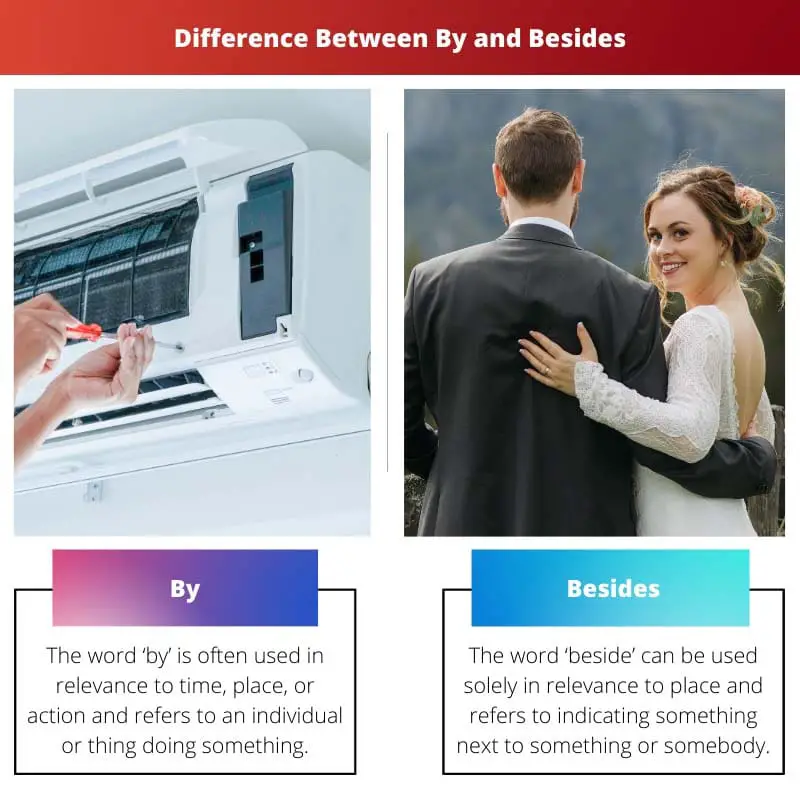“By” typically introduces a method, means, or agent through which something is done or achieved, focusing on the action itself. For example, “She fixed the issue by following the instructions carefully.” On the other hand, “Besides” implies an additional factor or consideration, often used to introduce something unrelated or supplementary to the main point. For instance, “Besides studying for the exam, she also attended a seminar on leadership.”
Key Takeaways
- “By” is a preposition used to indicate proximity, means, or a passage of time, while “besides” is a preposition or adverb to indicate something additional or an exception to a statement.
- “By” can be used to show location, method, or a deadline, whereas “besides” is used to introduce additional information or an alternative option.
- Both “by” and “besides” function as prepositions but serve different purposes within a sentence: “by” focuses on proximity or means, while “besides” introduces additional information or options.
By vs. Besides
“By” is used to indicate a means of accomplishing something, it comes after a verb, and can also indicate a specific time or deadline that something needs to be completed. “Besides” is used to indicate something in addition to or apart from what has been mentioned and can also mean “as well as”.

Comparison Table
| Feature | By | Besides |
|---|---|---|
| Function | Primarily a preposition with various uses, including: * Denoting means or method: accomplish something by working hard. * Denoting agent: The work was done by her. * Denoting location (in proximity): He stood by the window. | Can function as a preposition similar to “by” (meaning “in addition to”) or an adverb meaning “moreover” or “furthermore”. |
| Prepositional Use (Similar to “By”) | Used to introduce an additional element that is not essential to the main subject. | Used to introduce an additional element that is not essential to the main subject. |
| Adverbial Use | Not applicable | * “Moreover” or “furthermore”: They enjoy hiking, and besides, they love to camp. |
| Emphasis | Can emphasize the means, method, agent, or location. | * As a preposition: Similar emphasis as “by” when used non-essentially. * As an adverb: Emphasizes the addition of another point. |
| Examples (Prepositional Use) | * The cake was made by my grandmother. (agent) * They traveled by train. (means) * I live by the park. (location) | * I like to read, besides writing. * We need a plan A, and besides, it wouldn’t hurt to have a plan B. |
| Examples (Adverbial Use) | Not applicable | * He is not only intelligent, but also kind. (not using “besides”) * They enjoyed the movie, besides the long lines. * I am tired, and besides, I have a lot of work to do. |
When to Use By?
Introduction:
“By” is a versatile preposition in the English language, often indicating the means, method, or agent through which an action is performed or accomplished. Understanding its usage can significantly enhance your writing and communication skills.
Time Indication:
One common usage of “by” is to denote a specific time or deadline by which something must be completed. For example:
- “Please submit your report by Friday.”
- “The package should arrive by noon.”
Means or Method:
“By” is also used to express the means or method by which something is done or achieved. It provides clarity on how an action is performed. For instance:
- “He fixed the computer issue by restarting it.”
- “She achieved success by working hard and staying dedicated.”
Agent or Instrument:
Additionally, “by” can indicate the agent or instrument responsible for carrying out an action. This usage highlights who or what is involved in the process. For example:
- “The book was written by a renowned author.”
- “The message was delivered by email.”

When to Use Besides?
Introduction:
“Besides” is a versatile term in English, commonly used as a preposition or adverb to introduce additional information, alternatives, or exceptions. Understanding its various contexts can enrich your writing and communication skills.
Additional Information:
One primary usage of “besides” is to introduce supplementary information or considerations, often unrelated to the main topic but still relevant. For example:
- “Besides studying for the exam, she also volunteered at the local shelter.”
- “He enjoys hiking, besides playing the guitar in his free time.”
Alternative Options:
“Besides” can also indicate alternative options or choices, emphasizing alternatives apart from the main focus. For instance:
- “Besides pizza, they offer a variety of pasta dishes at the restaurant.”
- “Besides swimming, she enjoys yoga as a form of exercise.”
Exceptional Circumstances:
In certain contexts, “besides” can denote exceptions or exclusions, highlighting something that doesn’t fit the general rule or expectation. For example:
- “She’s the youngest in the team; besides her, everyone else is over thirty.”
- “He dislikes all fruits, besides apples.”

Main Differences Between By and beside
- “By”
- Indicates the means, method, or agent through which an action is performed or accomplished.
- Often used to denote a specific time or deadline by which something must be completed.
- Focuses on the action itself, providing clarity on how something is done or achieved.
- Example: “She reached the summit by climbing steadily.”
- “Beside”
- Introduces additional information, alternatives, or exceptions.
- Indicates proximity or comparison, often suggesting something alongside or in addition to the main focus.
- Implies an alternative option or choice, emphasizing something apart from the main subject.
- Example: “Beside the mountain, there was a serene lake.”




